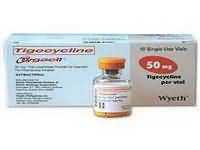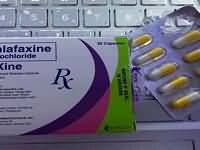Tigecycline

CLINICAL USE
Antibacterial agentDOSE IN NORMAL RENAL FUNCTION
Loading dose of 100 mg, then 50 mg twice dailyPHARMACOKINETICS
DOSE IN RENAL IMPAIRMENT
GFR (mL/MIN)
DOSE IN PATIENTS UNDERGOING RENAL REPLACEMENT THERAPIES
IMPORTANT DRUG INTERACTIONS
Potentially hazardous interactions with other drugsADMINISTRATION
Reconstition
5.3 mL of sodium chloride 0.9% or glucose 5% (gently swirl to reconstitute)Route
IV infusion
Rate of Administration
30–60 minutesComments
Add required dose to 100 mL of sodium chloride 0.9% or glucose 5%OTHER INFORMATION
AUC increased by 30% in CKD 5 .
See how to identify renal failure stages according to GFR calculation
See how to diagnose irreversible renal disease
Home








